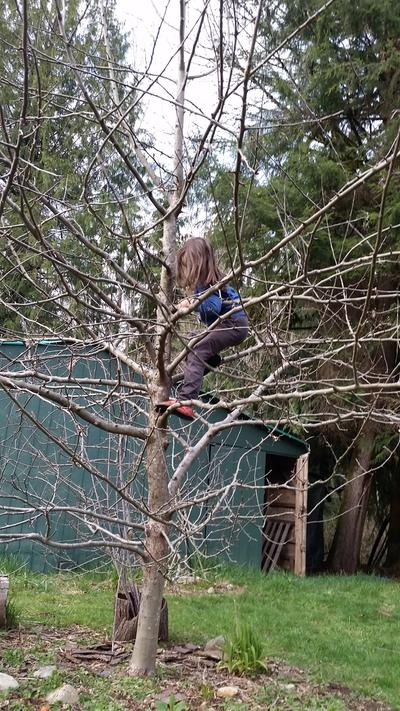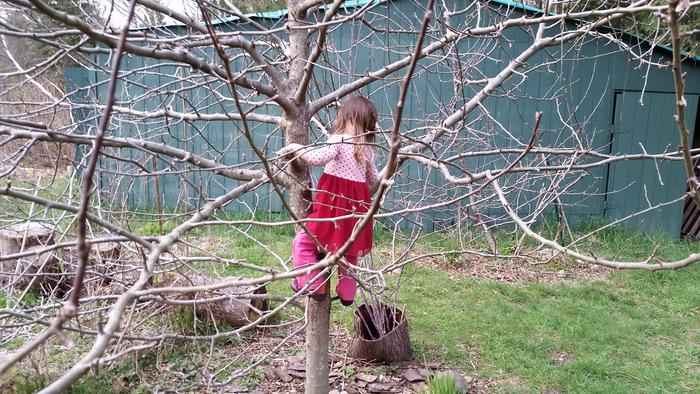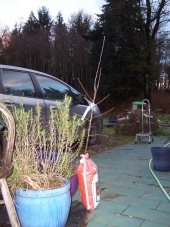




 2
2





-Nathanael




Forest Gardening in Practice: The first comprehensive review of temperate forest gardens. Case studies of private, community and commercial sites. Order from https://reallifeforestgardens.com/book

 2
2




List of Bryant RedHawk's Epic Soil Series Threads We love visitors, that's why we live in a secluded cabin deep in the woods. "Buzzard's Roost (Asnikiye Heca) Farm." Promoting permaculture to save our planet.
 1
1




-KatO-








 2
2








 1
1













 2
2




Tomas Remiarz wrote:All good points by Nathanael
Some additional questions and thoughts
Do you know what rootstock the tree is on? From the growth rate it sounds like a bush tree to me. Smaller trees tend to be more fussy and don't like too much root competition, meaning they're not ideal for polyculture plantings. That said, a lot of people still manage to make them fruit well, so it's probably not that.
Tomas Remiarz wrote:Are you in an area with late frost? If the blossom catches frost it may have died off resulting in no apples later in the year.
Tomas Remiarz wrote:Sounds like you've got some other apple trees around, so pollination may not be an issue. That said,if all your apples flower at a very different time then they may never meet the Braeburn! More info on pollination (and many other apple related things) here: https://www.orangepippintrees.com/pollinationchecker.aspx?v=1008
Bryant RedHawk wrote:
You might also want to get mushroom slurries into the soil around the tree's drip line, all fruit trees love and need to have mycelium mingling with their roots.
Philipp Mueller wrote:One more question: Other than producing no fruit, did the tree do well? Does it look healthy and grow a decent amount every year? If not, there may be a problem with root growth altogether. Do you have voles?
John Duda wrote:Is it possible that while trimming the tree you're eliminating the fruit buds? Learn to identify which is which before you trim the next late winter. The fruit buds are round and fat compared to slender leaf/growth buds. Or, don't trim next year except possibly crossing and dead branches.
I don't think I cut the fruiting buds. I was really excited in the spring and was counting all the buds...or at least, what I thought we buds....and then there were no flowers. Either I couldn't tell what the buds were, or my property did get hit by a late frost that wiped them out. I'm on a northfacing slope, so I thought I was more protected against that, as they'd stay dormant longer. But, maybe not...
Frank Cordeiro wrote:It could be the tree or it could be the soil... Do you have other apple trees growing nearby? I have an area where trees died after a few years, I dug down and discovered there was a old oiled road several feet down. Comfrey growing under the tree might help.
John Duda wrote:I planted a dwarf apple tree about thirty years ago which never flowered till it was 20 years old and that year it had one blossom. I had sold the land to a developer and they excavated that tree about 20 feet deep putting in the road. On that property there had been thousands of crab apples which never flowered except for 3 which I called master crabs. Is it possible that your tree is on a rootstock that carries on this tradition of not flowering. Or was there something in that land that inhibited flowering? I don't know, just grasping for an explanation.
I do wonder if it's something in the soil. The previous owner was not environmentally friendly (I discovered dumped burnt plastics and trash in the place I had made my duck yard), so he might very well have dumped something nasty there. Or, maybe my soil is deficient in phosphorous? My cherries still aren't producing, either, and my peach didn't make any fruit this year, though it flowered. My mulberries also haven't fruited. And, sunchokes barely grow for me (I had a patch of them die out all on their own!)
Nick LeClair wrote:My thoughts are that the tree might not be getting enough sunlight. Apple trees need a LOT of sunlight in order to make flower buds. I have seen apple trees doing the same thing you describe when they were planted in the wrong spot. Instead of blooming, the apple trees will put on a lot of vertical growth trying to grow taller than the trees or buildings that shade it. Apple trees should be planted where they will receive at least 6000 lux hours per day between summer solstice and autumn equinox. 6000 lux hours = 6 hours of 1000 lux sunlight, for example.
The tree gets about 2-4 hours of sun from fall equinox to spring equinox, due to being on a northfacing slope. But, from spring to fall, it gets 8-10 hours of sun. I planted the trees in the sunniest place on my property.
I managed to get a picture of the apple tree, complete with my cute kids for scale. My son had the idea to pretend to pick apples, and so had his sister pretend to, as well.
Under the apple is daylilly, garlic chives, strawberries, an artichoke and a random squash that decided to grow. Last year I also planted black cap raspberries there, and they are doing fantastic! The tree is mulched with tree tipmmings and duck bedding, and usually once-per-year I bury a shovel-full of meat scraps next to the tree. To the left of the tree is my lasagna/hugel garden bed (more about the garden bed https://permies.com/t/50364/Raised-Garden-Bed-Hugel-Fruit).
The cats do love to climb this tree, though. Would their claw marks damage the tree?
This is also my largest fruit tree, and the closest we have to a "climbing tree" (we have five acres, 3 of which are wooded, but no good climbing trees!), so I'm glad everyone is saying to keep the tree! My conventional gardener friends and family say I should get rid of it (in fact, I have some of their non-producing trees planted on my property, that they gave to me so they could plant other varieties in their place!)








 4
4




 5
5







| I agree. Here's the link: http://stoves2.com |









